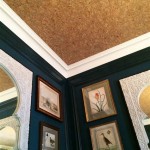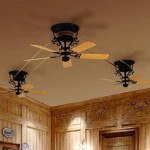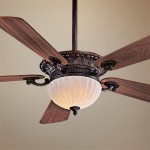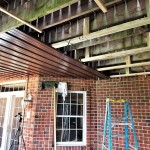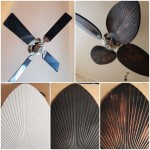Everything You Need to Know About Textured Ceiling Tiles in Classrooms
Textured ceiling tiles are a common feature in many classrooms, serving purposes beyond mere aesthetics. They play a critical role in acoustics, lighting, and even fire safety. Understanding the different aspects of these tiles, from their composition to their maintenance, is essential for creating a conducive and safe learning environment.
This article provides a comprehensive overview of textured ceiling tiles in classrooms, covering their types, benefits, potential drawbacks, installation, maintenance, and safety considerations. By understanding these key elements, educators, facility managers, and school administrators can make informed decisions regarding their selection, use, and upkeep.
Types of Textured Ceiling Tiles
Textured ceiling tiles are available in a variety of materials, each offering distinct properties and aesthetic qualities. Identifying the type of tile in place, or choosing the appropriate type for a new installation, is crucial for achieving desired performance characteristics.
Mineral Fiber Tiles: These are perhaps the most prevalent type of ceiling tile found in classrooms. Mineral fiber tiles are manufactured from a combination of recycled paper, slag wool, and other mineral components. Their primary advantages include excellent sound absorption, fire resistance, and affordability. The texture can range from subtle stippling to more pronounced patterns. Mineral fiber tiles are generally categorized by their density and thickness, which directly affect their acoustic performance and durability. Higher density tiles offer better sound absorption and are more resistant to sagging or damage.
Fiberglass Tiles: Fiberglass tiles are composed of glass fibers bonded together with a resin. They are known for their superior sound absorption capabilities, particularly in the higher frequency range. This makes them well-suited for classrooms where clear speech intelligibility is essential. Fiberglass tiles are also resistant to moisture and mold growth, making them a suitable option for humid environments. However, they are typically more expensive than mineral fiber tiles and may require special handling during installation due to potential skin irritation from the fibers.
Acoustic Foam Tiles: While less common in entire ceiling systems due to cost considerations, acoustic foam tiles are often used as supplementary treatments to improve sound quality in specific areas of a classroom. These tiles are made from open-cell foam, which effectively absorbs sound waves. They come in various shapes, sizes, and thicknesses, allowing for customized acoustic solutions. Acoustic foam tiles are often used in recording studios or music rooms, and can be strategically placed within a general classroom to address specific acoustic problems such as echoes or reverberation.
Metal Tiles: Metal ceiling tiles, often aluminum or steel, provide a sleek and modern aesthetic. While not traditionally known for their acoustic properties, perforated metal tiles backed with acoustic insulation can achieve good sound absorption. Metal tiles are also highly durable and resistant to moisture, making them a suitable option for areas requiring easy cleaning and long-term performance. They are often used in classrooms with a contemporary design or in specialized areas such as science labs.
Wood Fiber Tiles: Wood fiber tiles offer a natural and aesthetically pleasing alternative. They are typically made from recycled wood fibers and offer good sound absorption properties. These tiles can be stained or painted to match the classroom décor and provide a warm and inviting atmosphere. However, wood fiber tiles may be more susceptible to moisture damage and require proper ventilation to prevent warping or mold growth.
Benefits and Drawbacks of Textured Ceiling Tiles in Classrooms
The decision to use textured ceiling tiles in a classroom environment involves weighing the various benefits against potential drawbacks. A careful evaluation of these factors is crucial for making the best choice for a specific classroom setting.
Benefits:
Acoustic Control: One of the primary benefits of textured ceiling tiles is their ability to absorb sound. Classrooms are often noisy environments, with students talking, chairs scraping, and various activities generating sound. Textured ceiling tiles help to reduce reverberation and echoes, improving speech intelligibility and creating a more focused learning environment. The effectiveness of sound absorption depends on the type of tile, its density, and the texture.
Aesthetic Appeal: Textured ceiling tiles can enhance the visual appeal of a classroom. They come in a variety of patterns and colors, allowing for customization and integration with the overall design of the space. Different textures can create different visual effects, from subtle elegance to bold statements. The aesthetic appeal of a classroom can impact students' mood and learning environment.
Fire Resistance: Many textured ceiling tiles are designed to be fire-resistant, providing an important safety feature in classrooms. These tiles can help to slow the spread of fire and provide valuable time for evacuation. Fire-resistant tiles are often tested and certified to meet specific fire safety standards.
Light Reflectance: Certain textured ceiling tiles can improve the light reflectance in a classroom. A higher light reflectance value (LRV) means that the tiles reflect more light, reducing the need for artificial lighting and creating a brighter and more energy-efficient space. This can also improve visibility and reduce eye strain for students and teachers.
Drawbacks:
Maintenance: Textured ceiling tiles can be challenging to clean. The textured surface can trap dust and dirt, requiring regular vacuuming or wiping. Some types of tiles may be more prone to staining or damage. Proper maintenance is essential to preserve the appearance and performance of the tiles.
Cost: The cost of textured ceiling tiles can vary depending on the type of material, texture, and performance characteristics. Some high-performance acoustic tiles can be more expensive than standard options. The initial cost of installation and long-term maintenance costs should be considered when making a decision.
Potential for Damage: Ceiling tiles are susceptible to damage from impacts, water leaks, or improper handling. Damaged tiles can detract from the appearance of the classroom and may need to be replaced. It is important to handle tiles carefully during installation and maintenance and to address any water leaks promptly.
Asbestos Concerns (Older Buildings): In older buildings, there is a possibility that ceiling tiles may contain asbestos. Asbestos is a hazardous material that can pose health risks if disturbed. Before any renovation or demolition work, it is essential to have the tiles tested for asbestos and to follow proper abatement procedures if necessary.
Installation, Maintenance, and Safety Considerations
Proper installation, regular maintenance, and adherence to safety protocols are critical for ensuring the longevity, performance, and safety of textured ceiling tiles in classrooms.
Installation:
Professional Installation: For optimal performance and safety, it is recommended to have textured ceiling tiles installed by qualified professionals. Professional installers have the necessary knowledge, skills, and equipment to ensure proper alignment, secure attachment, and adherence to building codes and safety regulations.
Grid System: Textured ceiling tiles are typically installed in a suspended grid system. The grid system consists of metal channels that are hung from the ceiling and provide a framework for the tiles. Proper installation of the grid system is essential for ensuring the stability and levelness of the ceiling.
Cutting and Fitting: When installing tiles around fixtures or at the edges of the room, it may be necessary to cut and fit the tiles. This should be done carefully to ensure a clean and professional finish. Appropriate safety precautions, such as wearing gloves and a dust mask, should be taken when cutting tiles.
Material Handling: Proper handling of the tiles is essential to prevent damage. Tiles should be stored in a dry, protected area and handled with care during installation. Avoid dropping or bumping the tiles, as this can cause cracks or dents.
Maintenance:
Regular Cleaning: Regular cleaning is essential to maintain the appearance and performance of textured ceiling tiles. Dust and dirt can accumulate on the textured surface, reducing light reflectance and potentially affecting air quality. Use a vacuum cleaner with a brush attachment or a soft cloth to gently remove dust and dirt.
Spot Cleaning: For stains or spills, spot cleaning may be necessary. Use a mild detergent and a damp cloth to gently blot the affected area. Avoid rubbing the stain, as this can spread it or damage the tile. Always test the cleaning solution in an inconspicuous area first to ensure that it does not damage the tile.
Replacing Damaged Tiles: Damaged or stained tiles should be replaced promptly. This will help to maintain the appearance and performance of the ceiling. Replacement tiles should be of the same type and size as the original tiles to ensure a proper fit.
Inspecting for Water Leaks: Regularly inspect the ceiling for signs of water leaks. Water damage can cause tiles to sag, stain, or develop mold. Address any leaks promptly to prevent further damage.
Safety Considerations:
Asbestos Testing: In older buildings, it is essential to have ceiling tiles tested for asbestos before any renovation or demolition work. Asbestos is a hazardous material that can pose health risks if disturbed. If asbestos is present, follow proper abatement procedures to remove or encapsulate the asbestos safely.
Fire Safety: Ensure that the ceiling tiles meet the required fire safety standards. Fire-resistant tiles can help to slow the spread of fire and provide valuable time for evacuation. Regularly inspect the ceiling for any signs of fire damage or deterioration.
Proper Lighting: Ensure that the lighting fixtures are properly installed and maintained. Poorly installed or maintained lighting can pose a safety hazard. Use energy-efficient lighting to reduce energy consumption and heat generation.
Air Quality: Consider the air quality in the classroom. Some ceiling tiles may release volatile organic compounds (VOCs), which can affect air quality. Choose low-VOC tiles to minimize potential health risks. Ensure proper ventilation to remove any airborne pollutants.

Fissured Basic Acoustical Ceiling Panels
Surfaces Textures Rockfon

Ceiling Tile Sizes Choosing The Right Size For Your Home Angi

Ceiling Tile Sizes What Size Is Right For You Kanopi By Armstrong

Clean Room Acoustical Panels For Environments Ceiling Tile

Ceiling Cover Guide Lowe S

Fine Fissured Square Edge Ceiling Tiles

School Soundproofing Noise Control

Mineral Fiber Suspended Ceiling Ceilings Armstrong Residential

Calla
Related Posts

